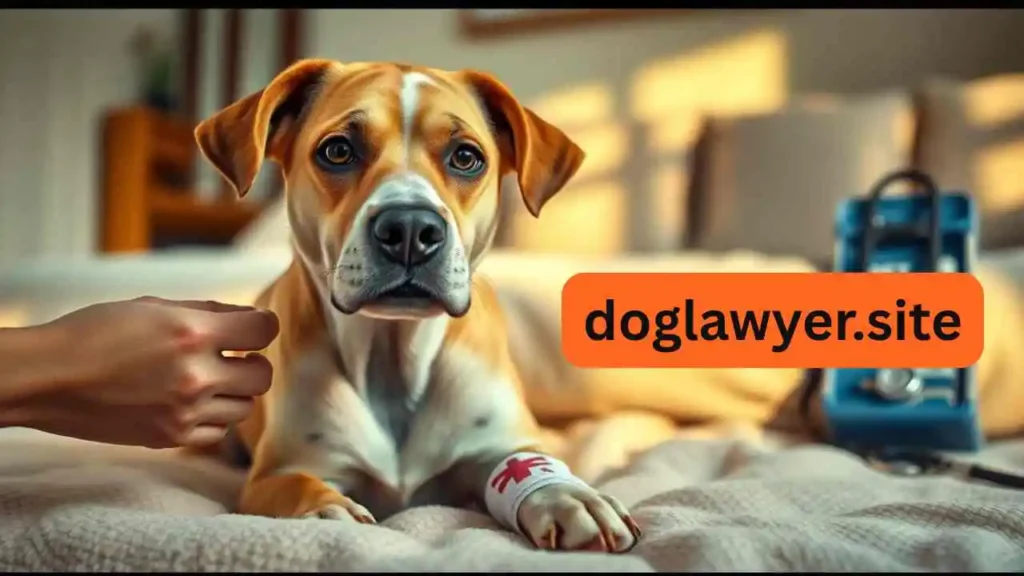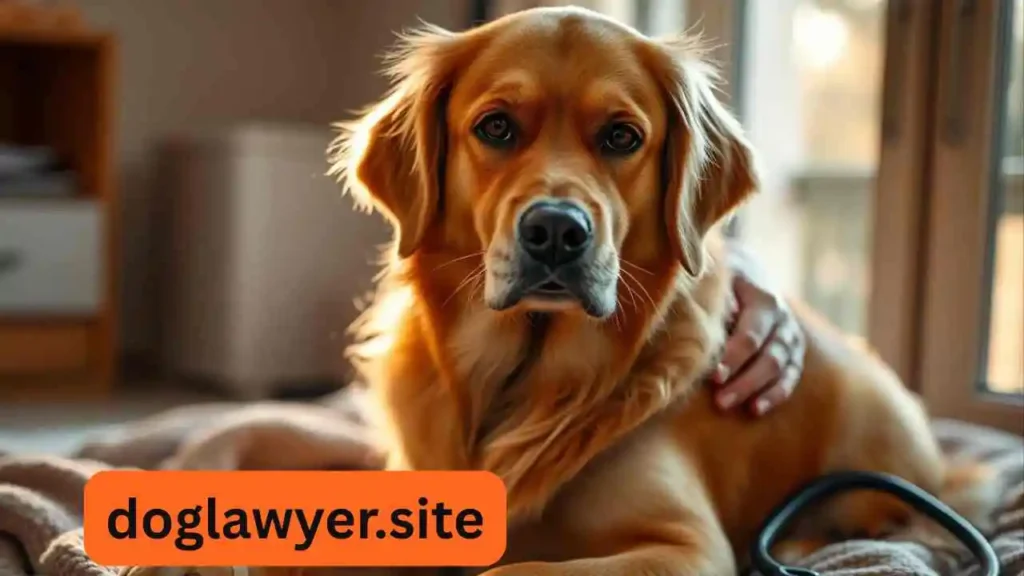When your dog gets bitten, it’s not just a physical injury—it’s an emotional shock too, for both of you. Knowing what to do next can feel overwhelming, but with the right care and attention, your furry friend can recover fully and safely. In this guide, we’ll walk you through every step of post-bite care—from first aid and vet visits to emotional healing and preventing future incidents. Whether the bite was minor or serious, your calm response and support will make all the difference.
Table of Contents
How to Care for Your Dog After a Dog Bite Incident 2025
A dog bite incident is more than just a wound—it’s trauma. For both your pup and, honestly, for you too. Whether it happened during a walk, at the dog park, or right in your backyard, the aftermath can feel overwhelming. But knowing what to do next? That gives you back some control. Let’s walk through how you can help your dog recover—physically and emotionally.
Understanding the Severity of the Situation
Identifying the Type of Bite
Not all bites are equal. Some are superficial—scratches, maybe a few punctures. Others, though, are deep, torn, bleeding badly. It can be difficult to discern by looking alone at times. If it came from a larger or aggressive dog, you have to assume the worst until a vet says otherwise.
When to Worry: Signs of Severe Trauma
Look for swelling, nonstop bleeding, or if your dog won’t move or cries when touched. Breathing changes? That’s serious. Limping? Could mean muscle damage or even a fracture. Don’t guess—if it feels off, get help.

Immediate Actions Right After the Bite
Stay Calm – Your Dog Feels Your Energy
Dogs mirror us. If you panic, they panic harder. I know—it’s hard to stay calm when your furry best friend is hurt, but a steady tone can make a big difference.
Safely Restrain and Comfort Your Dog
If they’re growling or flinching, use a towel to gently wrap and secure them. Not tightly—just enough so they don’t hurt themselves (or you). Talk to them. Use their name. Tell them it’s okay. It matters.
Assessing the Wound Before Touching It
Examine it more closely, but don’t prowl around.Check for visible debris, bleeding, or torn skin. If blood is gushing—apply light pressure with a clean cloth.
First Aid at Home (If Vet Visit Isn’t Immediate)
Cleaning the Wound Safely
Use lukewarm water to rinse the area gently. Avoid scrubbing—it can cause more harm. If there’s dirt, try to flush it out.
Applying an Antiseptic
The best solution is diluted betadine or chlorhexidine (never hydrogen peroxide or alcohol). You’re trying to clean, not burn the tissue.
Bandaging and Monitoring for Infection
If possible, loosely bandage the area to keep dirt out. Keep an eye for redness, swelling, or any oozing—those are infection red flags.
When to Take Your Dog to the Vet
Recognizing Infection or Deep Injury
If the wound is deep, bleeding doesn’t stop, or signs of infection show up within a day or two—don’t wait. Go. Now.
What Vets Typically Do in These Situations
They’ll probably clean the wound thoroughly (better than you can at home), prescribe antibiotics, and maybe pain meds. In some cases, sutures or drains are necessary.
Pain Management and Medication
Common Prescriptions Post-Bite
Vets may suggest Rimadyl, Metacam, or even antibiotics like Clavamox. Dosage matters. Stick to it exactly.
What to Avoid Giving Your Dog
Never—seriously, never—give human meds like ibuprofen or Tylenol. They can be toxic. Ask your vet before you even think about it.
Monitoring for Behavioral Changes
Trauma and Stress Responses
Some dogs shake or hide. Others may bark more, even growl unexpectedly. They use it to express that they don’t feel safe.”
Aggression or Fear Toward Other Dogs
This can happen even if they used to be super social. They remember the pain. Reintroducing them slowly (and positively) is key.

Emotional Care and Rebuilding Trust
Reassuring Your Dog Through Touch and Tone
Touch matters. Your voice too. Petting, calm words, being present—it helps them know the world’s not always scary.
Creating a Safe Recovery Environment
A quiet space away from other pets, with their favorite blanket or toy, can make a big difference. When they’re ready, let them come to you.
Keeping the Wound Clean During Healing
Daily Check-Ups at Home
Make it a ritual. Quick look in the morning and evening—any new swelling? Odor? Discharge? These are your clues.
Preventing Licking or Scratching
An Elizabethan collar (yes, the “cone of shame”) or a soft recovery suit might be annoying, but they help more than they hurt.
Nutrition and Hydration Support
Foods That Help Healing
High-protein foods and healthy fats can speed recovery. Maybe add a spoon of plain pumpkin or a bit of boiled chicken to their meals—if your vet says it’s okay.
Keeping Water Intake Steady
Hydration helps flush toxins and supports healing. If they’re not drinking, try ice cubes or a little diluted broth.
Exercise and Activity Restrictions
Knowing When to Rest and When to Move
For the first few days—keep them resting. Short walks—nothing too strenuous—can then aid with circulation.
Light Activities That Help Recovery
Gentle play indoors or puzzle feeders can stimulate their mind without stressing the body.
Follow-Up Vet Visits and Recovery Timeline
What to Expect in the Weeks Following
Two weeks is often the magic number, but every case is different. Some wounds take longer—especially if complications arise.
When the Risk of Complications Is Highest
Watch closely days 3 to 5. That’s when infections sneak in or internal swelling can worsen.
Legal and Social Implications of Dog Bites
Reporting the Incident
Depending on your location, reporting might be mandatory—especially if another dog was involved. It’s worth checking.
If Your Dog Was the Victim or the Aggressor
Either way, documentation is key. Photos, vet records, witness statements—they help protect both you and your dog legally.
Preventing Future Incidents
Understanding Dog Body Language
Watch tails, ears, eyes, posture. Dogs speak volumes nonverbally—we just have to listen better.
Proper Socialization Techniques
Slow introductions, neutral spaces, lots of praise. No rushing. Every dog has a comfort zone—respect it.
Final Thoughts; Care for Your Dog
Getting your dog through a bite incident isn’t just about the wound. It’s about healing everything—the body, the trust, the spirit.You may feel like you’re guessing on some days, and it’s messy and flawed. However, that’s alright. You are here for your dog. And executing everything flawlessly is not as important as that.
FAQs of Care for Your Dog After a Dog Bite Incident 2025
1. What should I do if my dog is bitten at night and no vets are open?
Try basic first aid—clean the wound, keep them calm, and call an emergency vet hotline if available. Arrive to a clinic as soon as possible.
2. Can a small bite still get infected?
Of course. Bacteria can be trapped beneath the skin by even a small puncture.
3. Should I keep my dog away from other pets during recovery?
Yes, especially for the first few days. Other pets might aggravate the wound—or stress your dog further.
4. Is it normal for my dog to act scared or distant after being bitten?
Yes. Trauma affects dogs emotionally too. Be patient. Reassure without pushing.
5. How long does it usually take for a dog bite wound to heal?
Minor bites can heal in 7–10 days. Deep wounds or infections may take 2–4 weeks. Always follow your vet’s guidance.
Read More
Do I Need a Tetanus Shot After a Dog Bite 2025?

